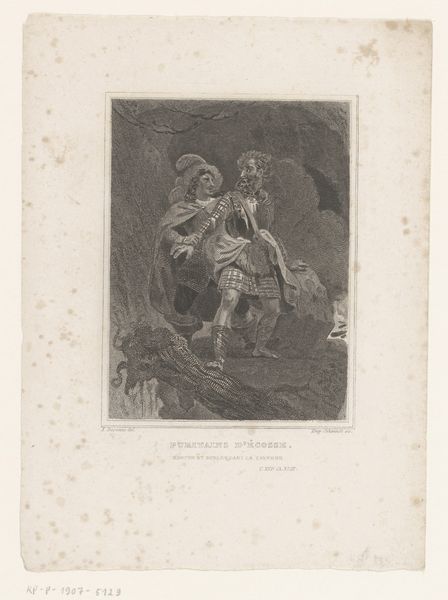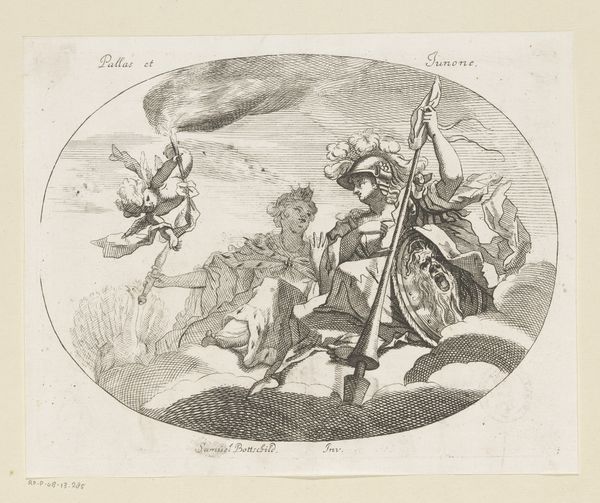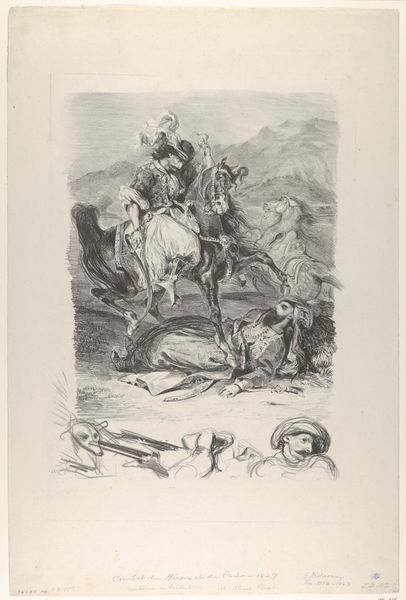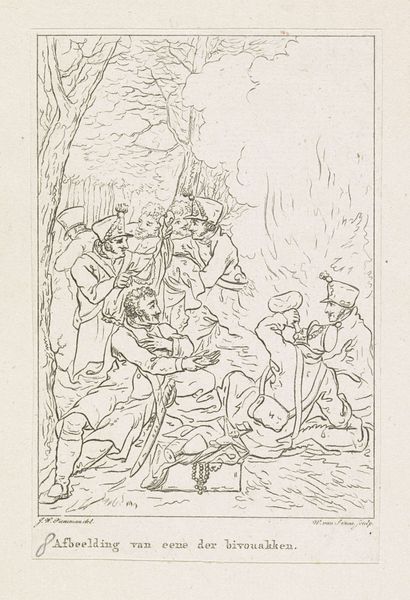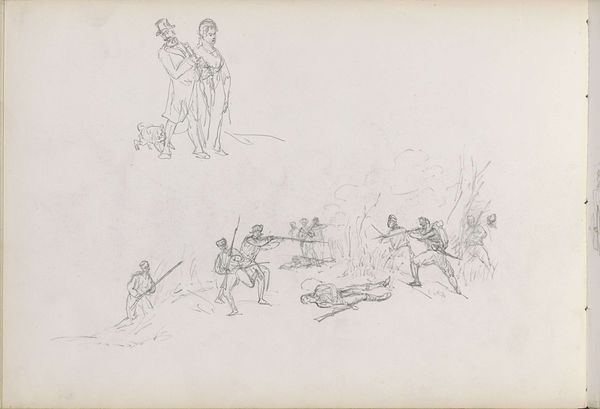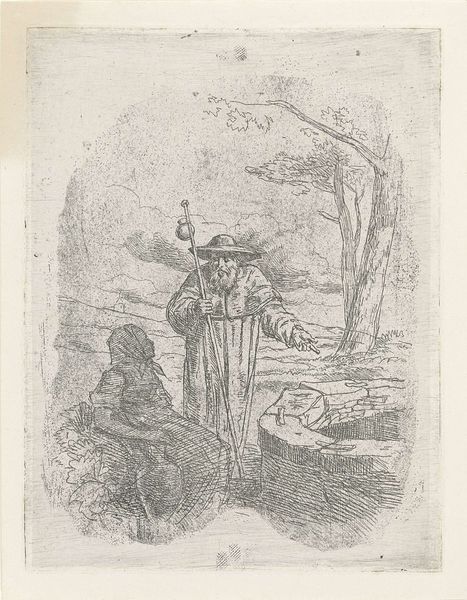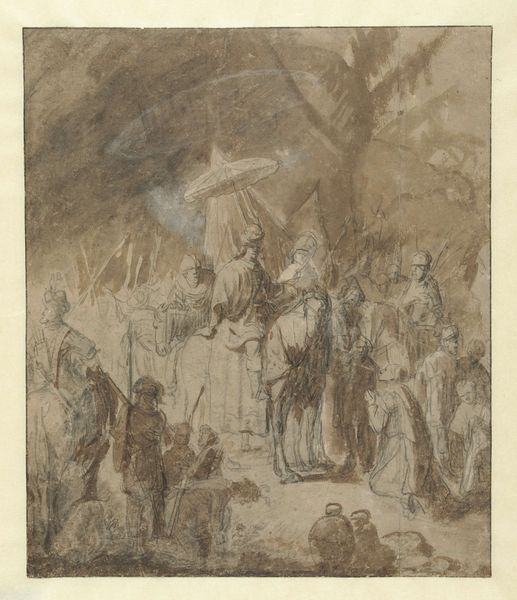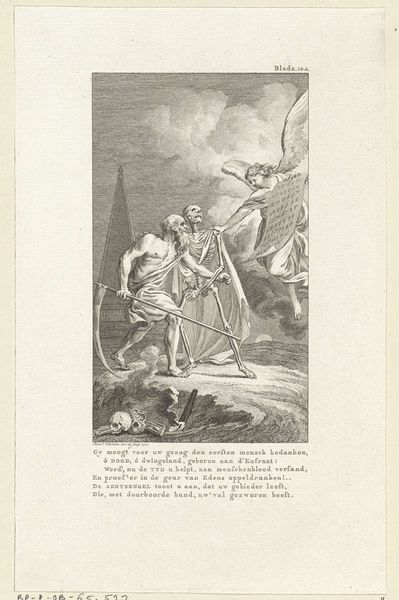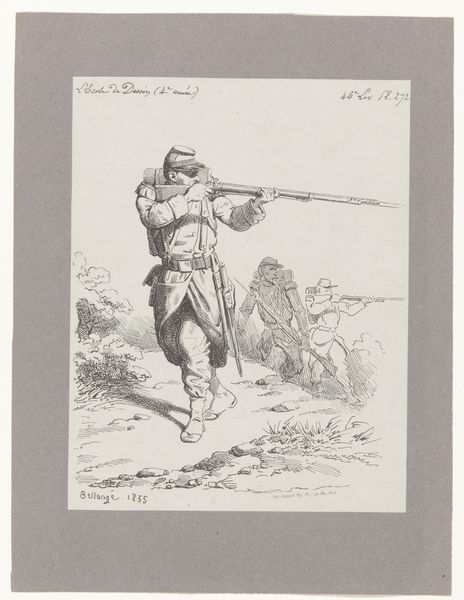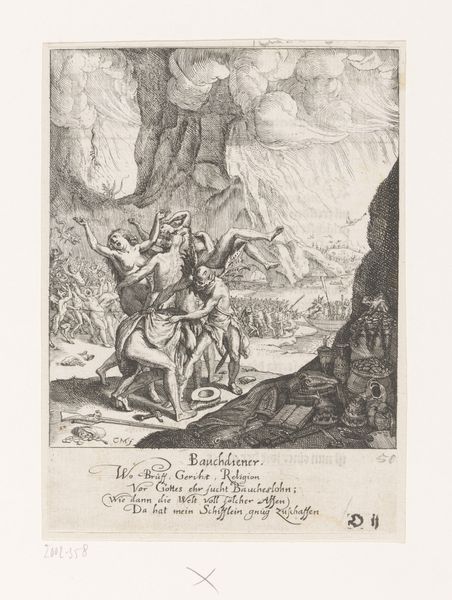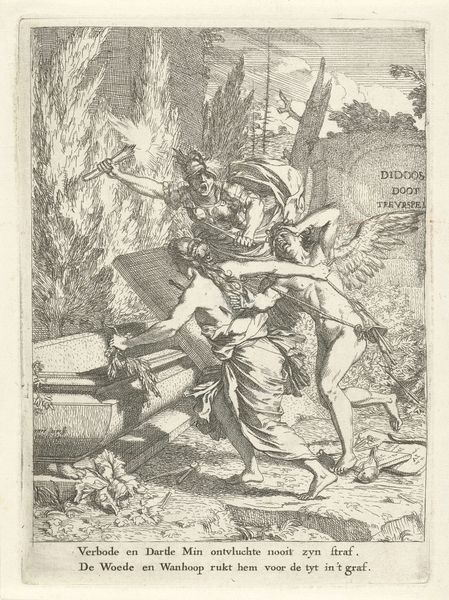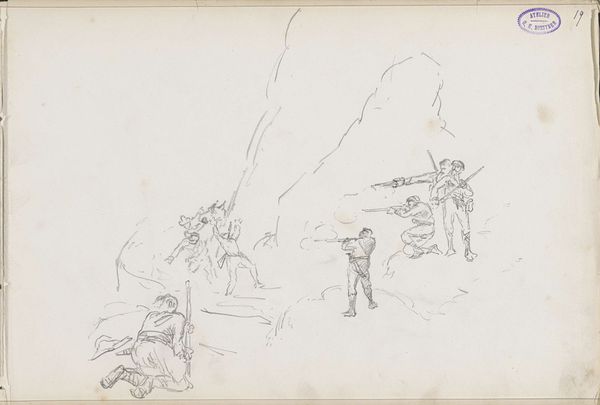
Dimensions: height 207 mm, width 170 mm
Copyright: Rijks Museum: Open Domain
Curator: This is a drawing by Karel Frederik Bombled, made between 1832 and 1902. The title, written below the image, is "Hugo de Montturen en Lucia a Ashby." It's currently held at the Rijksmuseum. Editor: My first impression is one of muted romance, a story sketched out in hazy greys. The lines are quick, energetic, giving it an unfinished, fleeting quality, like a half-remembered dream. Curator: Bombled has chosen humble materials: pencil on paper. Look at the quick strokes; he is capturing movement rather than precise detail. It feels almost like a study, preparatory work rather than a finished piece meant for display, giving us access to his process. Editor: The figures of Hugo and Lucia evoke a clear symbolic association of knighthood and courtly love. A hero on foot leading a noble lady upon a white steed conjures traditional motifs that represent ideals of courage and virtue. Notice how Lucia, though elevated on the horse, is placed slightly behind Hugo, hinting at subtle power dynamics. Curator: The paper itself would have been relatively cheap. Pencil, too, a readily available and easily erasable medium that invited experimentation. This artwork reveals much about art-making for the masses, diverging from elite-class, crafted art of the past. It makes me question the assumed value hierarchies implicit in drawing versus painting, sketch versus finished work. Editor: Consider the narrative context of the imagery, and how deeply embedded that symbolism is within Western cultural consciousness, as this image taps into a pre-existing understanding. I'm thinking about representations of protection, nobility, journey, and perhaps, even sacrifice. Curator: So, we are seeing both Romantic ideals represented and undermined by their mass availability through cheaper production practices. The meaning is tied directly to the material conditions under which it was made and circulated. Editor: It strikes me how the sparseness allows a space for introspection. These figures are outlines, suggestions that beckon us into the symbolism inherent in chivalric lore. We both see those outlines somewhat differently, you noting more the labor conditions, while I delve deeper into the imagery that fills them. Curator: I think understanding those original conditions of production gives us more understanding of its cultural appeal. Thanks to Romantic ideals of the common person, artists could find work creating more widely available images than ever before. Editor: Yes, both production and cultural symbols offer different paths towards interpreting this image.
Comments
No comments
Be the first to comment and join the conversation on the ultimate creative platform.

